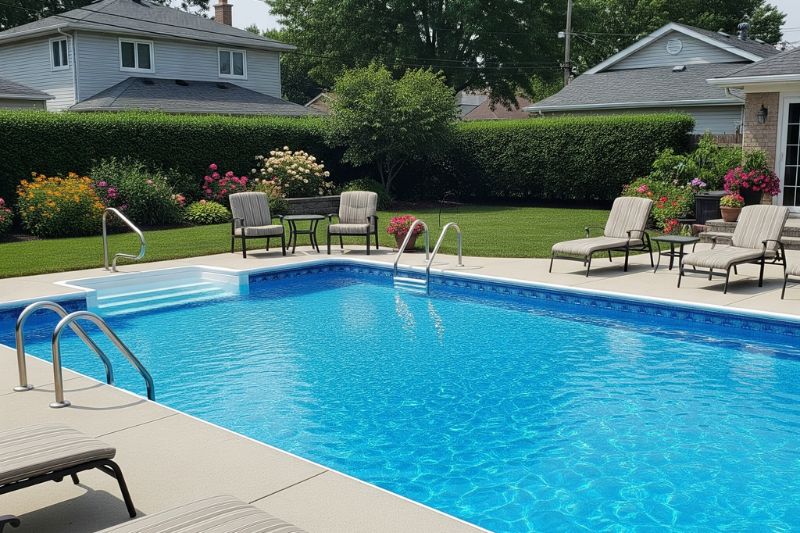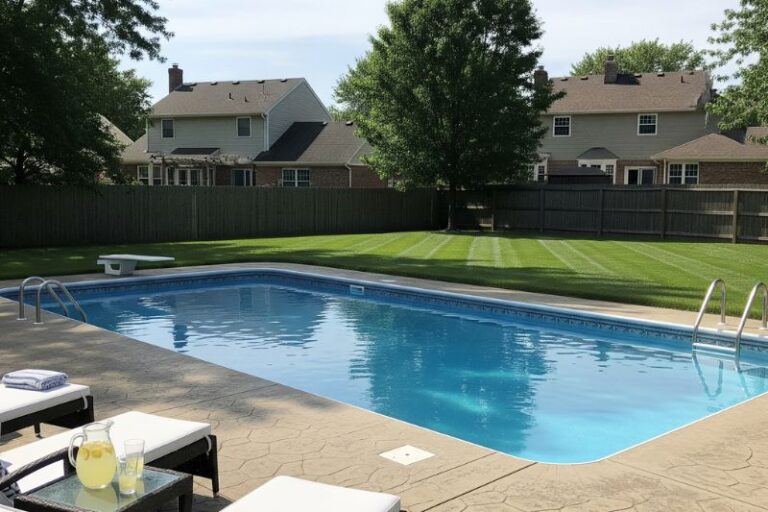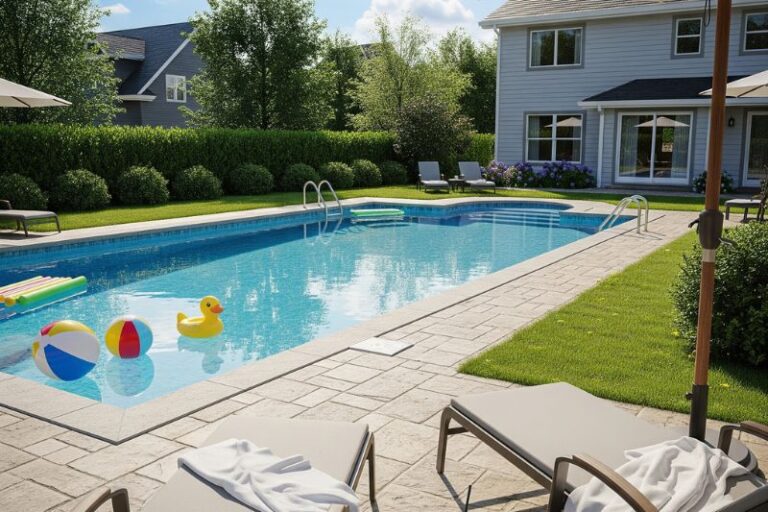It all started with a faint shadow at the deep end. Just a little smudge at first. Hardly worth mentioning. The homeowner swore up and down that they did everything right. But stains have a way of creeping up on you when you least expect it, like a criminal waiting for the perfect moment to strike.
What follows is the story of how pool stains took over, and how the mystery was finally solved.
Chapter One: The Clues
The homeowner called me in on a Tuesday morning, coffee in hand and confusion written all over their face.
“I don’t get it,” they said. “I vacuum, I shock, I test my water every week. Why does it look like my pool is covered in bruises?”
I crouched at the water’s edge and stared into the depths. Rust-colored streaks traced along the floor, greenish patches hugged the corners, and the steps wore a dull, cloudy haze like a worn-out detective’s trench coat.
Clue number one: The stains were not uniform.
Clue number two: The homeowner’s test kit showed a pH so high it could bake bread.
Clue number three: The basket was full of leaves even though they swore they emptied it “yesterday.”
We were dealing with more than just bad luck. This was a case of poor habits hiding under the mask of good intentions.
Chapter Two: The Interrogation
We sat down by the pump, and I began asking questions.
“When was the last time you really brushed the walls?” I asked.
“Oh, I vacuum weekly,” they replied.
“That’s not what I asked.”
Their silence said it all. Vacuuming picks up loose debris. But brushing? That breaks loose algae, dirt, and minerals clinging to the walls, the ones that eventually stain.
Next question. “What’s your calcium hardness at?”
More silence. Turns out they didn’t even own a test for it. The water had been eating away at the plaster for months, leaving behind chalky spots and etching.
And finally, “How often do you clean the filter?”
They flinched. “I backwash it when the pressure goes up.”
“Uh-huh. And when was the last time you took it apart and cleaned it thoroughly?”
“…Is that a thing?”
Case cracked wide open.
Chapter Three: The Crime Scene
We took a closer look at the pool together. The rust-colored stains? Those were metals leaching from debris left too long in the basket and the waterline. The green patches? That was algae stubbornly clinging where brushing never reached. The dull haze? Etching from unbalanced calcium and pH.
What the homeowner thought were good habits; occasional shocking, quick vacuuming, relying on one test strip had been letting the real culprits slip by unnoticed.
The stains didn’t happen overnight. They crept in quietly while the homeowner congratulated themselves for a job “well done.” Like any good mystery, the clues were always there. They just refused to look closely.
Chapter Four: The Resolution
We got to work immediately.
We balanced the water chemistry. pH and alkalinity came down to safe levels. Calcium hardness was adjusted so the water stopped attacking the plaster.
We brushed the entire pool; walls, steps, even the tight corners. Loose algae floated away like evidence at a crime scene finally uncovered.
We cleaned the filter properly. Disassembled it, scrubbed the grids, flushed out the gunk that had been clogging it for months.
We treated the stains with the right products, targeting metals and organic matter separately. Slowly, the bruises began to fade.
And finally, we made a schedule. A real maintenance schedule that included more than just skimming and throwing in chlorine.
Case Closed
When we finished, the pool looked brighter and calmer. The homeowner stared at it with a sheepish smile.
“Guess I wasn’t as on top of it as I thought,” they admitted.
“No one ever is,” I said. “But now you know what to look for.”
The stains taught them a lesson most pool owners eventually learn. You cannot cut corners. You cannot rely on quick fixes. And you definitely cannot ignore the small clues, or they will turn into a full-blown crime scene.
Lessons Learned Checklist:
- Brush the walls and steps weekly, not just vacuum.
- Test pH, chlorine, and calcium hardness, not just one or two.
- Empty the skimmer and pump baskets before they overflow.
- Clean the filter thoroughly at least every few months.
- Treat stains early before they settle in for good.
- Do not assume your pool is fine just because the water looks okay.
When the stains appeared slowly, it was because the homeowner ignored the clues. When they took over, it was because no one stopped them. But once you learn to spot the signs and stay ahead of the mystery, you become the detective who always solves the case.
So keep your eyes sharp, your test kit ready, and your brush in hand. Because your pool is full of secrets. And it’s up to you to uncover them before the stains win.




